Meet Raj Basu
First published in Sanctuary Asia,
Vol. 42
No. 10,
October 2022
Founder of Help Tourism and Advisor to state governments in the East Himalayan and Indo-Burman region on tourism, with a special focus on rural tourism, Raj Basu does not like to be in the limelight. He would rather focus on his agenda of empowering communities through rural tourism. Bittu Sahgal and Lakshmy Raman spoke with this down-to-earth tourism trailblazer who has been quietly transforming one village at a time in east and Northeast India, Nepal and Bhutan, empowering communities to take pride in their way of life, and creating ways to enhance livelihoods, all with the goal of protecting our wilds.
You were a small-town boy and never too far from nature…
Yes, my father was an engineer in the railways with a transferable job and so I spent a lot of time with my maternal grandparents, aunts, and uncles. My mother, the eldest in a large family, was only 17 when I was born and I was the only grandson, and a pampered one at that. Until around the age of five, I grew up in a double-storied wooden house in the beautiful heritage town of Jalpaiguri, really an entry point to the Northeast’s famed natural beauty. The Karala river (that eventually meets the Teesta) flowed just past the house courtyard and we had a boat parked to go to the market and other places in town. Birdsong was a constant and we often heard jackals in the evening.
A devastating flood on the Teesta destroyed my grandparents’ home and my mother and I moved to Siliguri to be with my father and my paternal grandmother and grandfather, who had retired from the Chengmari tea estate on the Bhutan border. Even there, 20 minutes out of town, was the Sevoke forest (now the Mahananda Wildlife Sanctuary) and the legendary Baikunthapur forest, where the novel Ananda Muth was written. The first independence freedom movement slogan ‘Bande Mataram’ comes from here and the Sanyasi Utthan, the revolt against the British by fakirs and sanyasis, believed to be the first freedom struggle, began here. The dense forest that seemed inaccessible to the British, hosted small ashrams that served as centres of learning for local children and youth, without any class barrier.
Siliguri was a small trading town then, which began developing because of the Najini Himalayan railway, today a world heritage site. So, this wonderful ambience that I grew up in, raised on stories about the freedom struggle and connection to the wilderness nurtured my love for nature and northeastern lore.
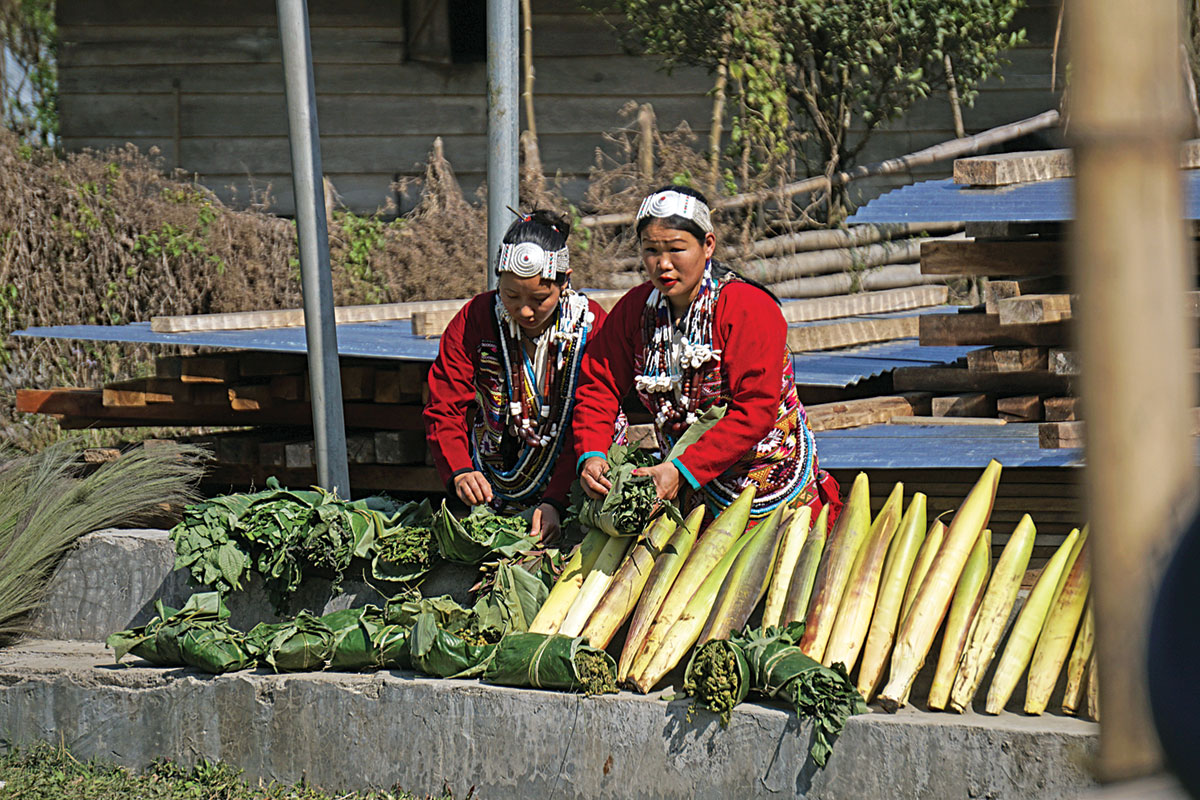
Northeast India’s rich biodiversity forms the basis of the culture, lifestyle, and livelihoods of locals. Ethnic groups here use backyard plants as food, and this led to diversity in their diet, thus better nutritional status of the population. Photo Courtesy: Raj Basu.
What about your education?
I was a naughty child and my grandmother often complained that I was unmanageable, which resulted in me being sent away to boarding school – the famous Oak Grove School in Mussoorie in Class 6. Interacting with boys from every part of the country really introduced me to what it is to be Indian. As a boy scout, I was part of treks, hikes and camping, and all this toughened me. I am really grateful to that period, which gave me a real sense of being global and independent. Post schooling, I attended college in Siliguri, where I would often skip classes to hike and explore the Bengal Himalayan region. One of my first long and memorable treks was to Sandakphu, now known as the Singalila National Park. That was the beginning of a long association with the region and I would keep visiting, joining in tree planting programmes, trekking, mountaineering, camping and more. I was part of the North Bengal Explorers Club and had lots of opportunities for adventure and connecting with nature. After my graduation, I completed a one-year certificate course in wildlife management, where I scored the highest grade, and immediately found a job as a research assistant for tiger projects in eastern India – in the Sundarbans, Buxa and Namdapha. This not only allowed me to do what I love best – be in the wild, but it also gave me valuable opportunities to interact with NGOs and conservationists and wildlifers.

What got you involved with nature ‘tourism’?
I spent time in the Garhwal Himalaya as a professional, leading groups into different kinds of adventure activities – white rafting, mountain biking and treks. Those were the days! I drove my Yezdi bike to travel from the Indian Mountaineering Institute in Delhi, all along the Ganga, organising these trips. This gave me an opportunity to combine wildlife, conservation and tourism. Yet, home always beckoned me and I wanted to work for the people there. I went to Sikkim, collaborated with the state government, and hosted immersive experiences, such as excursions to Changu Lake, trekking, whitewater rafting expeditions, and adventure festivals, all of which was quite novel to the region then.
And what led to the launch of Help Tourism?
I set up Help Tourism with two college friends in 1991. It had been declared the ‘Visit India’ year with youth travel being the main theme and the time was ripe. We were then the only organisation promoting focused adventure tourism in eastern and northeastern India. However, we also realised that while most of our activities occurred in remote, pristine areas, local communities were hardly involved, except for some minor work as laborers. So instead of camping near villages, we worked on a concept of homestays, probably the first in the country, so tourists could live in local homes. Though we faced initial hiccups and hesitation, eventually both tourists and locals warmed up to the idea. With the help of WWF India, we established the first four homestays of India in Tinchuley. Then we moved on to Lava, which is now the entry point to the Neora Valley National Park, and Lataguri, which is the entry point to Gorumara National Park.
So, that is how the movement of bringing people into protecting their natural heritage through direct involvement and ownership in tourism began and the concept gained traction.
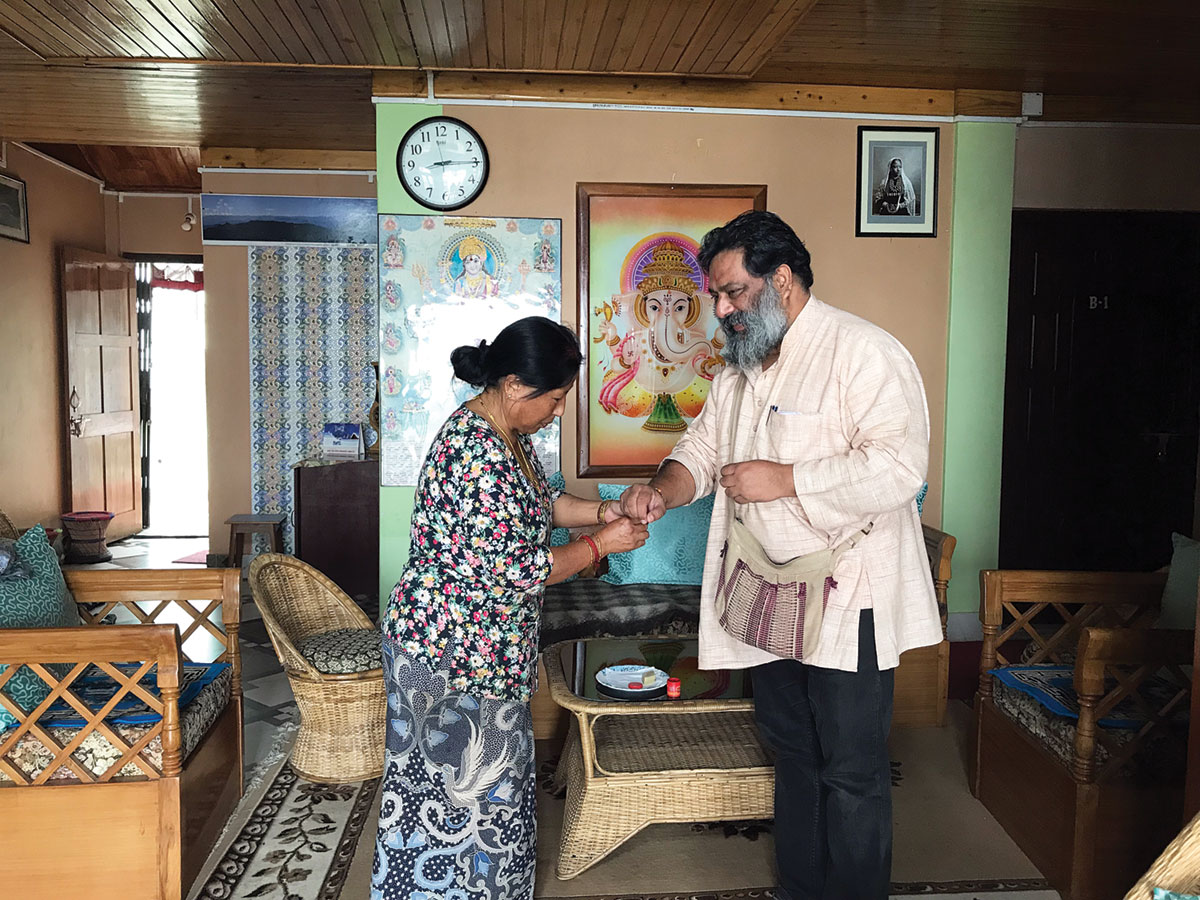
Raj Basu firmly believes that conservation tourism without local people is impossible. The movement he and his two college friends initiated focused on bringing people into protecting their natural heritage through direct involvement and ownership. HELP Tourism focuses on harnessing and nurturing local knowledge and skills to create sustainable livelihoods. Photo Courtesy: Raj Basu.
How, in your view, can local communities help convert tourism into a nature conservation sector?
Our aim for conservation or rural tourism is simple – empower locals to protect their natural heritage. Back in the ‘90s, while working in the Sikkim and North Bengal landscape, in remote areas, people began thinking beyond Darjeeling and Kalimpong as getaway destinations. We always told people that nature is your partner and with that you can find a livelihood in tourism.
As we promoted our concept, increasingly, people from different professions wanted to join our conservation tourism movement. In 2001, we registered an NGO, ‘Association for Conservation and Tourism’ (ACT), the first conservation tourism NGO of the country. Our mission then and now is the same – conservation tourism without local people is impossible. The ownership has to be with the local people. Today, we have words like sustainability and sustainable development, but we made it much simpler.
We nurtured and developed this concept and soon were active in more than 50-60 villages. We were virtually a movement; in fact, in the late ‘90s, people called it the Help Tourism movement. Under the banner of the ‘Association for Conservation and Tourism’, we were able to involve hundreds of people from different walks of life.
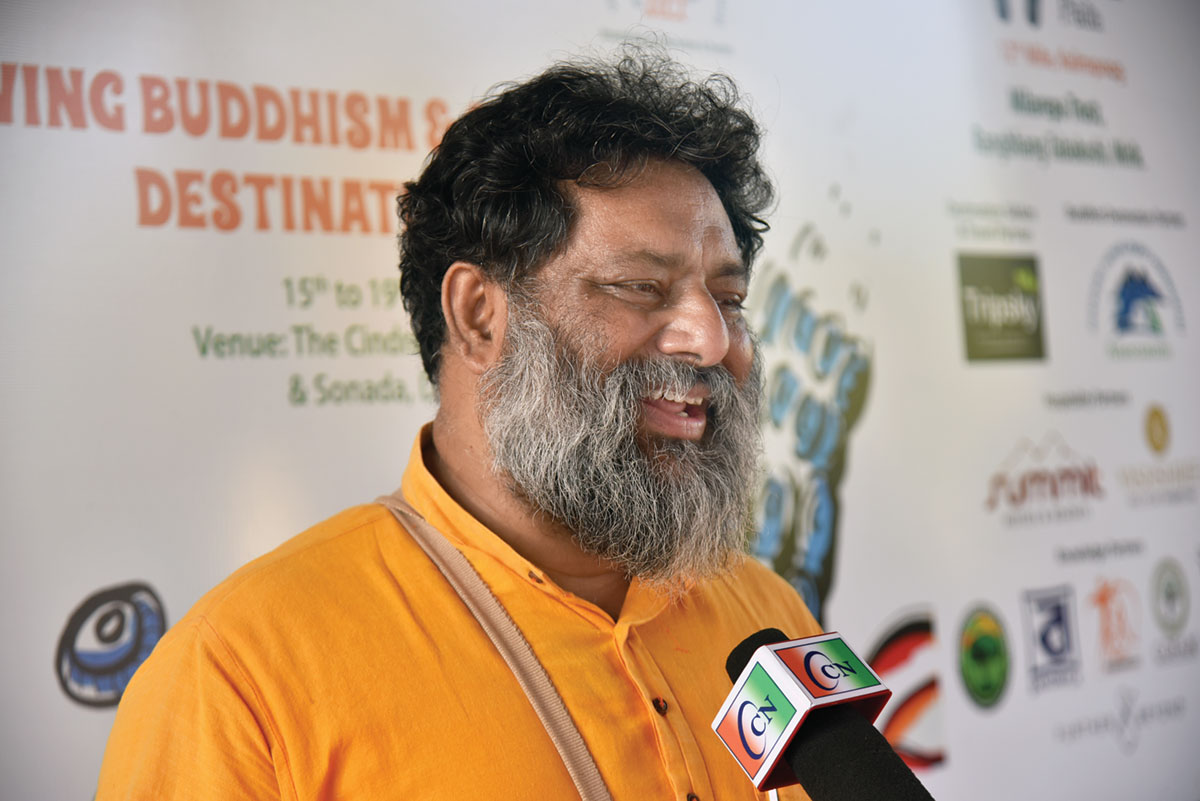
Since his childhood, Raj Basu was exposed to the natural beauty of Northeast India – growing up on the banks of the Karala river, and later exploring wildernesses in the region as a young man. This love transformed into a commitment to share the region’s beauty with others and give back to the communities living in and around our Protected Areas. He went on to establish Help India and Association for Conservation and Tourism that were always at the forefront of the real wildlife conservation tourism movement. Photo Courtesy: Raj Basu.
One of your biggest success stories was in Manas...
In 2002, a young, energetic graduate student, Parthapratim Das, connected us with the Field Director of Manas, Abhijit Raha, a jovial gentleman who understood conservation from the community point of view, and as a forest officer. We decided to go to the most difficult area of Manas, the eastern-most part, to the small village of Lakkhi Bazaar. For two decades, because of the Bodo movement, the village did not even have a postman. Notorious for political insurgency, people feared visiting. We hired a car from Barpeta Road and went for a day’s workshop. However, listening to them and understanding their zeal and the discipline with which they had survived the insurgency, we decided that we had to get involved. We began the ‘Manas Maozigendri Ecotourism Society’, another first for the country. The village boys, around 80 of them, knew the forest like the back of their hands. We initially focused on 500 sq. km. of the park’s core area and involved villagers in its conservation. They knew where the poachers were and soon became an extended hand of the Forest Department. The rifles that were used for the insurgency were now being used for conservation. And then we had with us the wonderful District Commissioner, Dr. Anwaruddin Choudhury (Sanctuary Asia, Vol.41 No.12, December 2021) who was a pillar of support for this entire conservation movement. The famous Bengali actor Sabyasachi Chakrabati became the first brand ambassador and contacted the army at Fort William and arranged for tents and waterproof gear. The Wildlife Trust of India founder, the late Ashok Kumarji, sent in bicycles and raincoats for the village boys. The Bodoland Territorial Council (BTC) Deputy Chief, who was also the Chief of Forest and Tourism, Khampa Borgoyari, supported us completely and organised remuneration for the volunteers.
So, everything came together thanks to a concerted effort. Manas became an exemplary example of community conservation. It was the people, especially the youth, who brought back Manas.
Amazing how a day’s visit changed everything…
That one day lasted two weeks. We had not carried any clothes and wore Bodo gamchas like the locals, ate at their homes and lived in a building where arms were stocked up. The first thing I asked them was, “Manas is a World Heritage Site, endangered because of the Bodo movement. Do you really want to be responsible for that?”
We stayed back to listen to their stories. During one-on-one interactions, they shared how the timber and poaching mafias from Bhutan and other parts of the country took advantage of the insurgency situation and did not respect this wonderful biodiversity hotspot. The villagers and youth in particular, were proud of their backyard biodiversity and recognised how their basics of food, clothing and shelter, came from there. They were one with their environment and cared about it. One young man I met, Buddheshwarji, a Bodo militant, had already lost one of his hands and had been hiding in the forest for long periods. He recounted how while hunting a wild pig, he approached closer, assuming the animal was dead but it had sprung up to take a chunk of his arm. He trained himself to use his left hand and though he had no knowledge of Hindi, his understanding of the forest was extraordinary.
I often complained during our volunteer meetings that they boast about wild elephants in Manas but that I had never seen one here. One evening, when I was sitting in a former militant camp-converted to a conservation camp with five or six volunteers, a cloud of dust seemed to be moving toward us. The volunteers warned that it was an elephant herd running toward our camp. We were confused as to why the herd was approaching our camp, when we saw Buddheshwar with a stick in his left hand, chasing the elephants in our direction. He wanted to prove to me that Manas had elephants and had literally herded a group of 30 plus wild elephants! I don’t recommend such craziness, but it speaks of how people here are part of the forest ecosystem. So, to take these people out of this ecosystem in the name of development, and ask them to develop skills for urban areas would destroy them. Our policymakers fail to understand that their livelihoods and economy have to be connected to the ecology of the region. Their inter-generational efforts to conserve this land, which is one of our best insurances against climate change, must first be of benefit to them.
Our efforts eventually paid off. We invited Kishore Rao and David Shepherd from UNESCO and won back Manas’ designation as a World Heritage Site. The big learning for me was that for conservation to succeed, it has to come from inside.
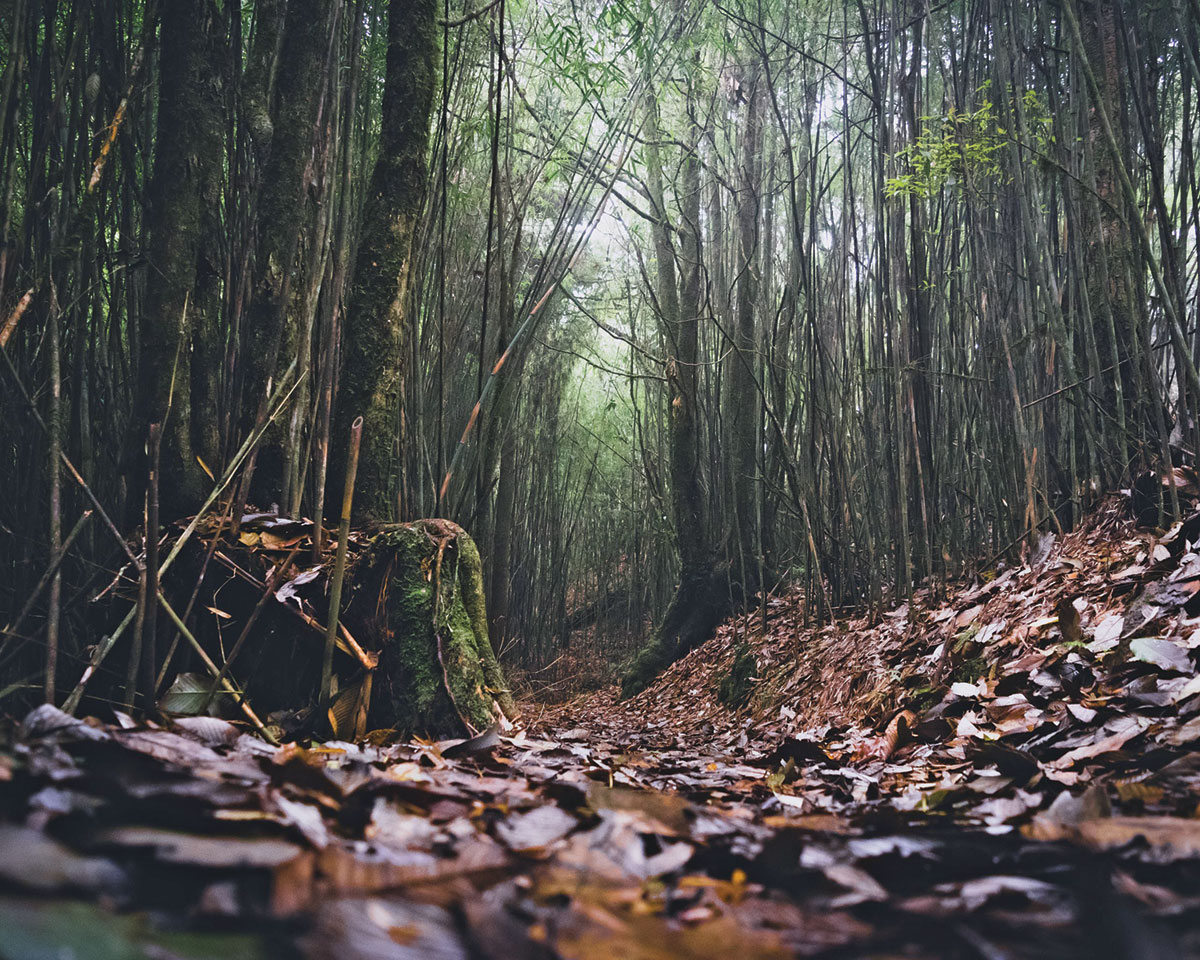
For two decades, the Bodo movement and political insurgency left the Manas forests off limits. But the zeal and discipline of locals inspired Raj Basu and his colleagues to involve the community in conservation efforts. The rifles that were used for the insurgency began to be used for conservation. Photo: Public domain/Kunal Bhowmik.
That’s when the movement expanded to other parts of the Northeast?
The Manas Maozigendri initiative brought a lot of attention and changed the conversation about how conservation can be achieved not just through official diktats but from the communities who live there. We were invited to Namdapha, one of the best biodiversity areas in India and began working at a local NGO, SEACOW, to train youth and develop skills that would lead to livelihood opportunities in tourism. We also began working in eastern Nepal, northern Bangladesh, Bhutan, Upper Myanmar and several other places and these cross-border efforts helped showcase how biodiversity shared across landscapes can benefit communties. Conservation tourism need not be in isolation. We helped adjoining neighbouring countries to create rural tourism homestay policies, organised trainings, and included them in festivals. So this became a conservation movement beyond borders and now as Advisor, Rural Tourism for Arunachal Pradesh, one of my key efforts is to encourage and enable cross-border collaboration on conservation and sustainable tourism.
How are you helping to promote local culture and traditions?
The intangible cultural heritage of locals, their culture, lifestyle and livelihoods are directly related to their backyard biodiversity. We need to nurture not only responsible tourism communities, but also resilient communities and community leaders who believe in sustainability and not just tourism. We started an initiative known as ‘Gurubas’ under the ACT to focus on true sustainability in villages. We took the whole village into consideration, keeping biodiversity conservation traditions that had been passed on for generations alive. Whether it is safeguarding skills of house building, weaving or heirloom recipes using local produce – we wanted to convince them, particularly the youth, that their traditions were their foundation and backbone, to see that people around the world are interested in their sustainable traditions and learning from their parents and grandparents. It’s a gradual process and won’t happen overnight, but persistence will pay off.
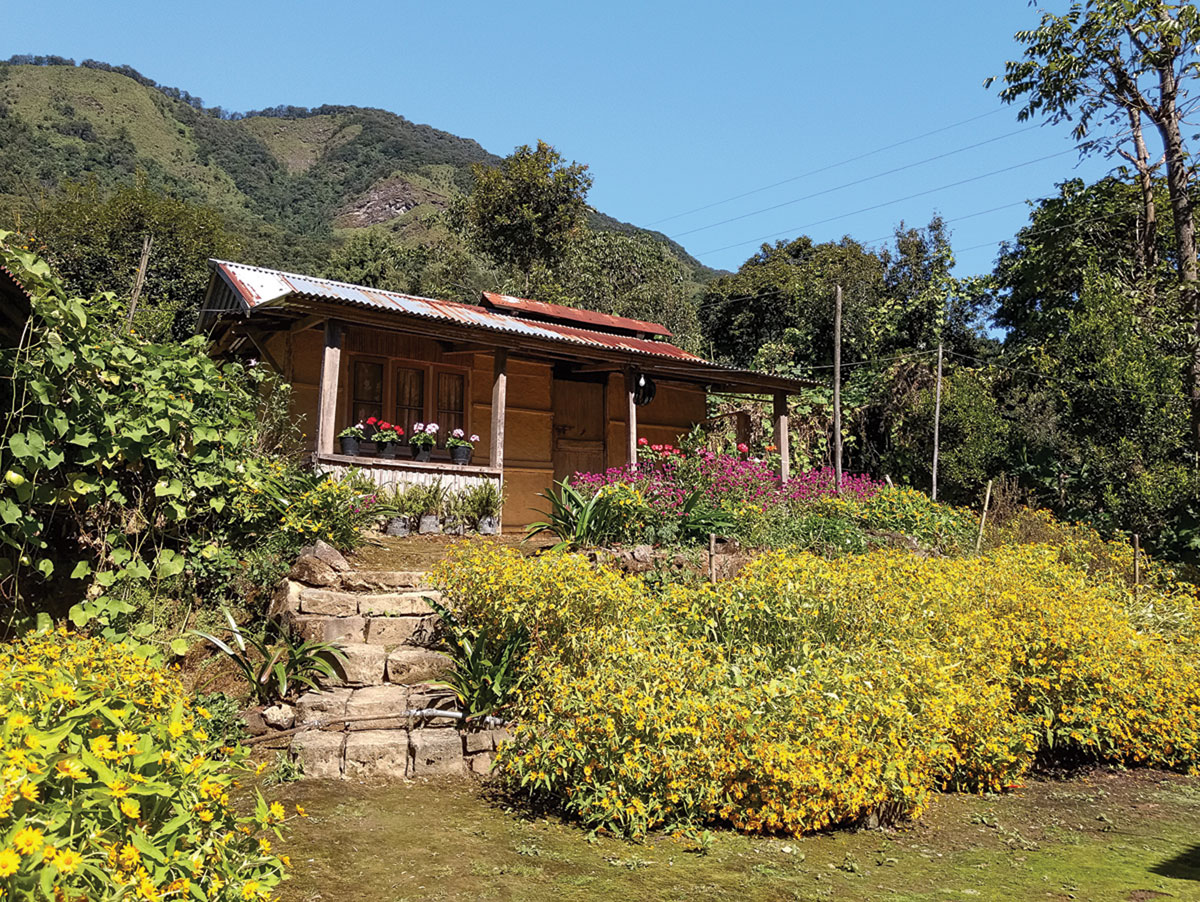
Raj Basu and his organisation helped neighbouring countries create homestay policies. One of their efforts involves enabling cross-border collaboration on conservation and sustainable tourism. Human borders seldom stop wildlife, airflows, groundwater, and other natural elements. Photo: Public domain/Mike Prince.
The world has woken to the idea of rewilding, which you were already implementing. Tell us about your rewilding efforts.
Under ACT, we initiated Smriti Van, to reclaim degraded and deforested areas. We undertake native plantation drives in collaboration with the Forest Department and encourage our patrons to adopt trees. Locals or banmitras (friends of the forest) are involved in caring for the trees. They are paid Rs. 3 per tree per day and each family is given around 100 trees – fetching them around Rs. 300 per day. This gives them a little extra income. Our goal is to restore green corridors in the East Himalaya and Indo-Burma region that have been lost to tea estates, encroachment and other developmental projects and also help to decrease human-wildlife conflict. Eventually, such rewilded areas (see cover story on page 24), can also provide tourism opportunities that offer birdwatching, herping and forest healing walks.
There has been a lot of interest in our Smriti Van project, with people wanting to adopt trees in the memory of family members. So, this project is one which we hope will be a turning point for the entire region.
How has the pandemic impacted the small tourism sector and what kind of future do you see ahead for operators?
The pandemic taught us a lot of lessons. You can have money, the best malls and a lot of flash. But without oxygen, immunity, you are vulnerable. If you are not connected to nature, if you’re not resilient, if you’re in a secondary livelihood profession, you are at risk. Yes, the tourism sector was impacted, but that’s a temporary setback and the moment things opened up, people wanted to escape their urban, cramped apartments to seek nature and open spaces. And in the coming years, I see more people, Indians rich and not rich, choosing to move to smaller towns, to their ancestral lands, to seek experiences away from bright city lights.
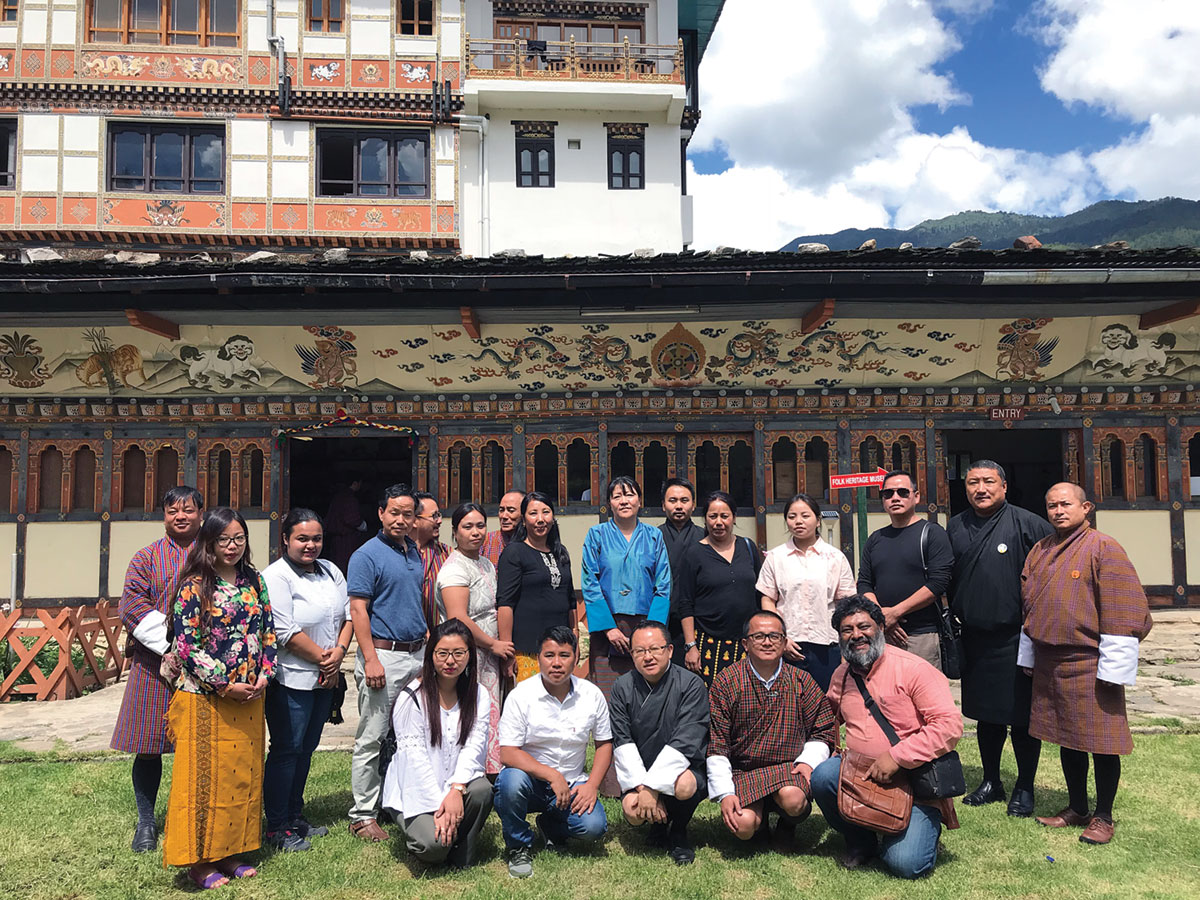
In Raj Basu’s words: “Our aim for conservation or rural tourism is simple – empower locals to protect their natural heritage. The ownership has to be with the local people. We always told people that nature is your partner and with that you can find a livelihood in tourism. Photo Courtesy: Raj Basu.
Hearing you speak, it sounds like you are describing a freedom movement! Any message for the children of India?
My message is for the parents of urban India. Help your children connect with nature. Soon, you will realise that if your primary livelihood activity is not connected to nature, protecting and valuing it as generations of old did, it will be difficult to survive. Every school, university and parent in urban areas must encourage and teach the young about living close to the soil, about growing your own food, about the pleasures of walking along a stream and in the forest... not as an adventure activity, but for your physical and mental health. Create village institutions that work in tandem as sister institutions to those in cities and introduce your children to simple ways of living. While a part of education could be conventional, a part should be done in rural schools to learn how to live with nature. This will help solve many issues plaguing us today, from individual ecological grief to the climate and biodiversity crises that are overwhelming the world today
Do you have hope for the future given the seemingly unsolvable climate crisis?
Development has to be sustainable and equitable. That’s not a cliché, it’s a strategy. And tourism can guide us to do this right. We need to close the gap between urban and rural residents, not by building smart villages but self-sufficient villages. Cities should not be cut off from our rural heritage but should instead aim to learn and improve their own sustainability from the wisdom and natural frugality of the India whose true heart still beats in our villages. Policymakers, educators and all of us who think that we love our country and the environment, need to work towards this goal.








